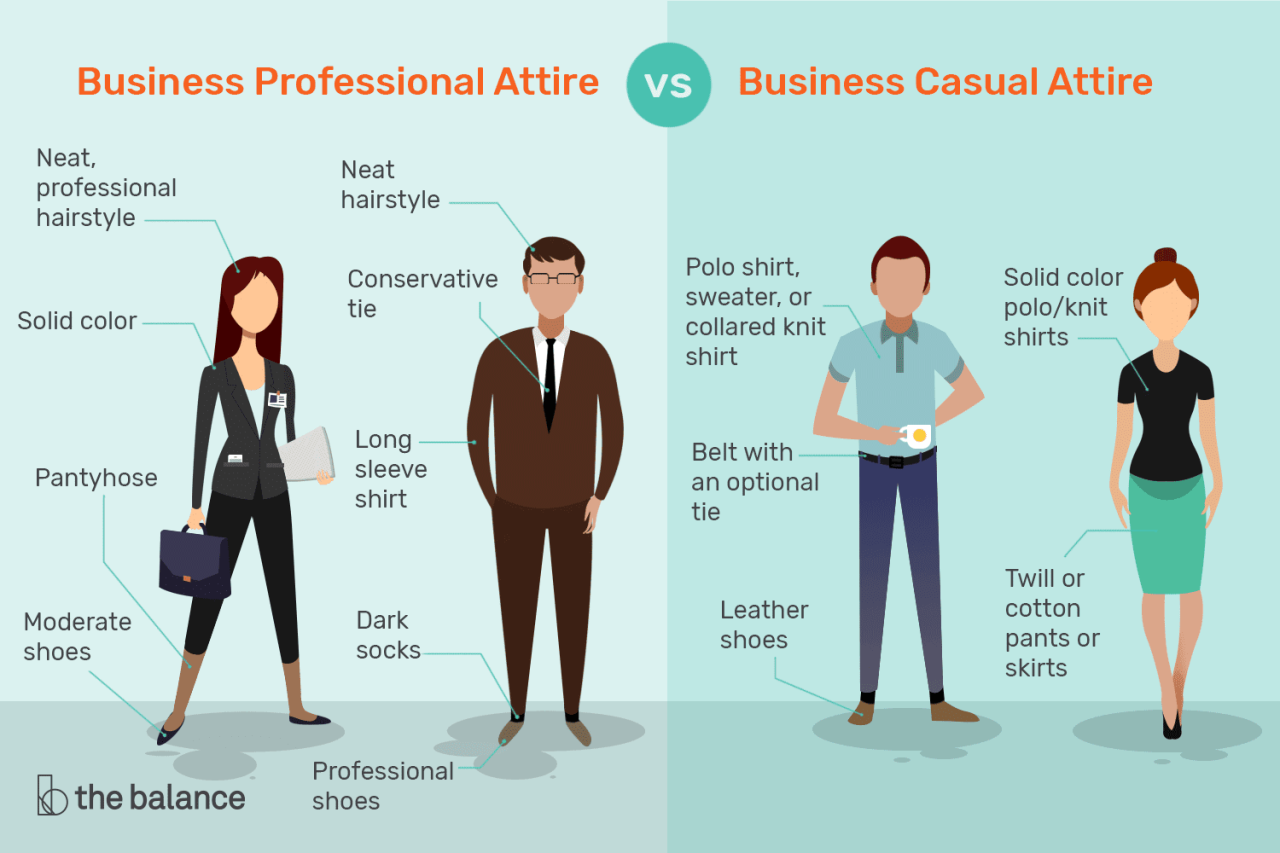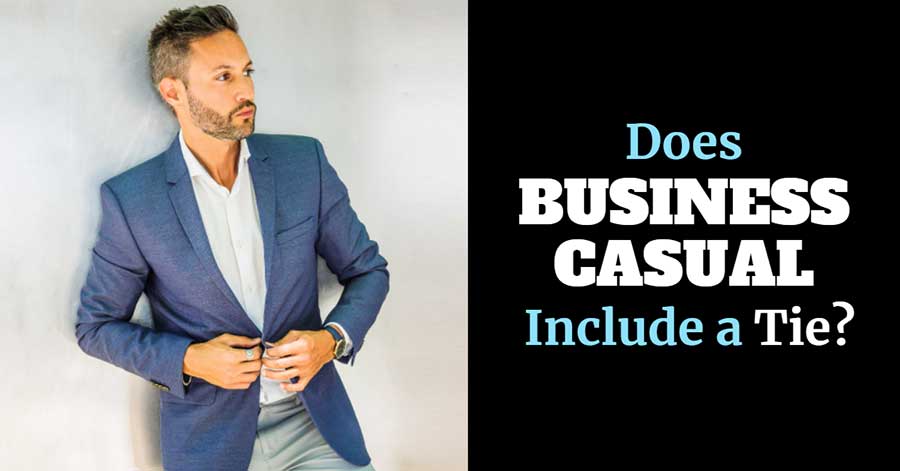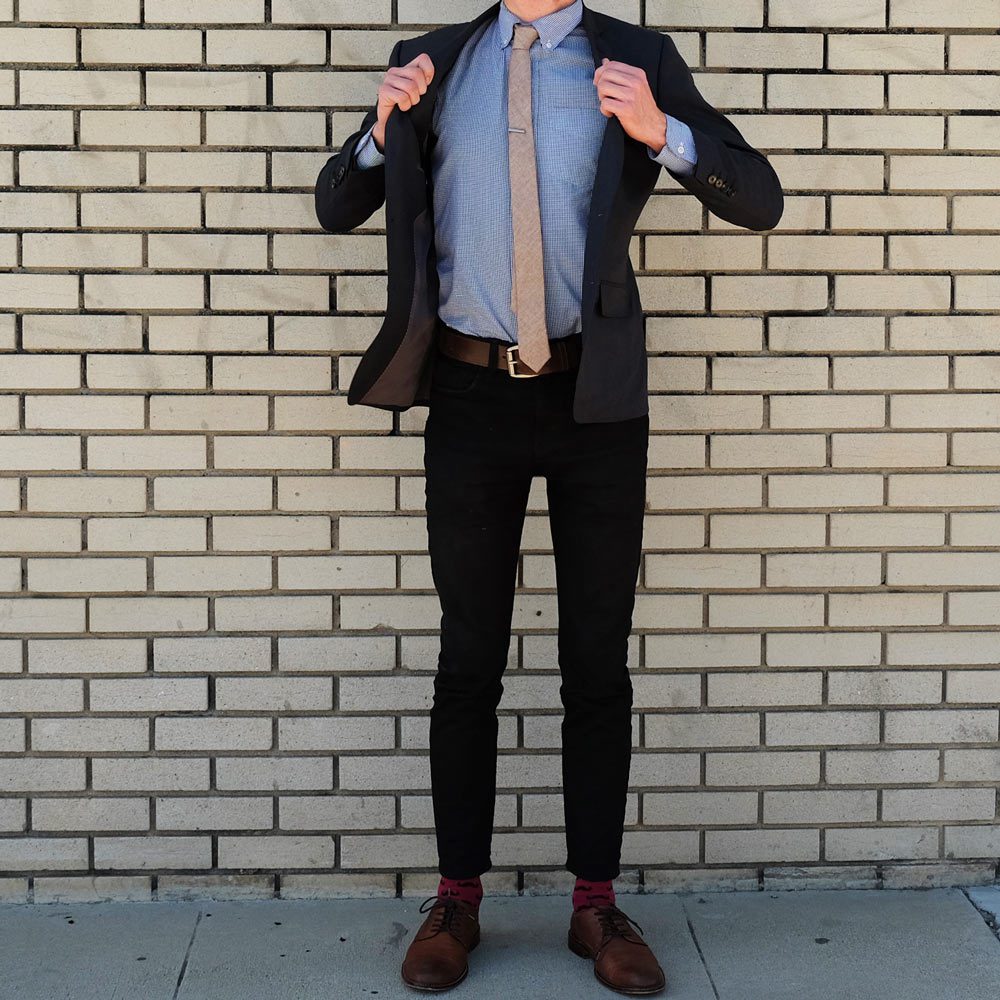Do you wear a tie for business casual? The answer, surprisingly, isn’t a simple yes or no. Business casual itself is a nebulous term, varying wildly across industries and company cultures. What’s acceptable in a tech startup might be considered underdressed in a financial institution. This exploration delves into the nuances of business casual attire, examining the role of the tie (or its absence) and the factors influencing this often-debated sartorial choice. We’ll navigate the historical context of ties, explore alternative neckwear options, and ultimately provide you with the knowledge to confidently navigate any business casual dress code.
Understanding the spectrum of business casual is key. From the relaxed environments of some modern workplaces to the more traditional settings of established corporations, the acceptable level of formality fluctuates significantly. This guide will help you decipher the unspoken rules, offering practical advice and visual examples to ensure you always make a professional and appropriate impression, regardless of whether you choose to wear a tie.
Defining “Business Casual”

Business casual is a dress code that aims to strike a balance between professional and relaxed attire. However, the interpretation of this seemingly straightforward term varies significantly depending on the industry, company culture, and even the specific workplace. What might be considered acceptable in a tech startup might be deemed too informal in a law firm, highlighting the need for clear internal guidelines and individual awareness.
The range of acceptable attire under a business casual dress code is broad, leading to potential misunderstandings and inconsistencies. While some companies may permit jeans and t-shirts (with certain restrictions), others might maintain a stricter adherence to traditional business attire, simply relaxing the requirement for a suit and tie. This fluidity necessitates a careful consideration of context and a proactive approach to understanding the specific expectations within one’s workplace.
Acceptable and Unacceptable Business Casual Attire
The following table provides examples of clothing items that are generally considered acceptable or unacceptable under a business casual dress code. Remember that these are guidelines, and individual company policies should always take precedence.
| Item of Clothing | Acceptable in Business Casual? | Example of Acceptable Style | Example of Unacceptable Style |
|---|---|---|---|
| Pants | Yes | Khakis, chinos, dress pants (darker colors preferred) | Ripped jeans, sweatpants, cargo pants |
| Shirts/Tops | Yes | Button-down shirts (long or short-sleeved), blouses, polos (collared shirts generally preferred) | Graphic tees, tank tops, overly revealing tops |
| Shoes | Yes | Loafers, oxfords, clean sneakers (depending on the workplace), dress boots | Flip-flops, sandals, excessively worn-out shoes |
| Jackets/Blazers | Yes | Blazer, cardigan, sport coat | Leather jackets (unless specifically permitted), overly casual outerwear |
| Accessories | Yes (with moderation) | Watches, belts, scarves (tastefully chosen) | Excessive jewelry, flashy accessories |
| Dresses | Yes | Knee-length or midi dresses in professional fabrics, such as cotton, wool, or silk. | Mini-dresses, overly casual sundresses |
A Typical Business Casual Outfit
A well-executed business casual outfit prioritizes neatness, appropriateness, and a professional impression. The key is to balance comfort with a polished appearance.
For Men: A classic business casual outfit for men might include well-fitting chinos or dark-wash jeans (if permitted), a collared shirt (button-down or polo), a blazer or sport coat (optional, depending on the weather and workplace), and loafers or clean leather shoes. A belt matching the shoes completes the look. Avoid overly casual t-shirts or distressed denim.
For Women: A business casual outfit for women could consist of tailored trousers or a knee-length skirt paired with a blouse or a sweater. A cardigan or blazer can add a layer of professionalism. Closed-toe shoes such as pumps, loafers, or flats are generally appropriate. Accessories should be minimal and tasteful. Avoid overly revealing tops or overly casual footwear.
The Role of the Tie in Business Casual Attire

The tie, a seemingly simple piece of neckwear, holds a significant place in the history of professional dress. Its evolution reflects broader societal shifts in workplace culture and expectations, particularly the ongoing evolution from formal business attire to the more relaxed, yet still professional, business casual. Understanding the tie’s role within this spectrum is crucial for navigating modern workplace dress codes.
The historical context of ties in business attire is deeply rooted in formality and tradition. Originally evolving from cravats worn by Croatian mercenaries in the 17th century, the tie gradually became a staple of men’s formal wear, symbolizing professionalism, respectability, and adherence to established norms. Throughout the 20th century, the tie was virtually indispensable in most business settings, regardless of industry or company size. Its presence indicated a commitment to a certain level of formality and seriousness.
The Impact of Wearing a Tie in Business Casual Settings, Do you wear a tie for business casual
The impact of wearing a tie in a business casual environment is multifaceted and depends heavily on context. Wearing a tie generally conveys a more formal and traditional image, suggesting professionalism, attention to detail, and perhaps a more conservative approach. Conversely, choosing not to wear a tie often projects a more relaxed and approachable demeanor, potentially suggesting creativity, innovation, or a less hierarchical company culture. The absence of a tie can sometimes signal a desire for greater comfort and informality, particularly in warmer climates or during long workdays.
Perceptions of Ties in Different Business Casual Environments
The perception of a tie varies significantly across different business casual environments. In a traditional, established corporation with a more formal history, a tie might be viewed as a sign of respect for established norms and a commitment to professionalism. Employees may feel pressure to adhere to more traditional dress codes, even within a business casual framework. Conversely, in a fast-paced startup environment known for its innovative and informal culture, a tie might be perceived as out of place, even overly formal. In such settings, employees are more likely to prioritize comfort and individuality in their attire, potentially viewing a tie as a hindrance to creativity or team cohesion. The specific company culture, industry norms, and even the individual manager’s preferences all play a significant role in shaping the perception of a tie within a business casual context. A well-dressed individual would be aware of this nuance and adjust their attire accordingly.
Factors Influencing Tie-Wearing Decisions
The decision of whether or not to wear a tie in a business casual environment is a nuanced one, influenced by a complex interplay of professional, social, and personal factors. Understanding these influences is crucial for navigating the often-ambiguous world of business casual dress codes and projecting the desired professional image. This section explores the key elements that shape an individual’s tie-wearing choices.
Several factors contribute to an individual’s decision regarding tie usage in business casual settings. These range from the formality of the occasion and the prevailing company culture to deeply personal preferences and comfort levels. The weight given to each factor can vary significantly depending on individual circumstances and priorities.
Meeting Importance and Context
The importance and formality of a meeting significantly impact the decision to wear a tie. A high-stakes presentation to senior executives or a crucial client meeting often calls for a more formal appearance, including a tie. Conversely, an internal brainstorming session or a less formal team meeting might allow for a more relaxed approach, foregoing the tie altogether. The venue also plays a role; a meeting in a formal boardroom might encourage a tie, while a casual off-site meeting might not. For example, a sales representative meeting a potential client for the first time would likely wear a tie to project professionalism and seriousness, whereas a meeting with colleagues to discuss project updates in a relaxed office environment might not necessitate a tie.
Personal Preference and Comfort
Personal style and comfort levels significantly influence tie-wearing decisions. Some individuals feel more confident and professional in a suit and tie, regardless of the dress code, while others find ties restrictive and prefer a more relaxed look. This personal preference often overrides other considerations, particularly in environments with flexible dress codes. For instance, an individual who strongly dislikes wearing ties might consistently choose to forgo them, even in situations where a tie might be considered appropriate by others.
Company Culture and Dress Code
Company culture and explicitly stated or implied dress codes are major determinants. Some organizations maintain a more formal atmosphere, even within a business casual framework, encouraging the consistent use of ties. Others adopt a much more relaxed approach, prioritizing comfort and individuality. Observing the attire of senior management and colleagues provides valuable insight into the unspoken norms and expectations. A company with a highly traditional and formal culture might expect employees to wear ties even in business casual settings, while a startup with a more relaxed atmosphere might not.
Tie Styles and Colors: Impact on Impression
The choice of tie style and color significantly impacts the overall impression in a business casual setting. A subtly patterned tie in muted tones projects a professional and understated image, suitable for most business casual scenarios. Brighter colors or bolder patterns can convey more personality and confidence but might be considered too informal for some settings. For example, a simple navy or gray tie is a versatile and safe choice for most business casual occasions, while a brightly colored tie with a large pattern might be more appropriate for a less formal event. A knitted tie, often associated with a more relaxed style, might be acceptable in some business casual settings but could be inappropriate in others.
Scenario: A Missed Opportunity
Imagine Sarah, a marketing manager, attending a crucial client presentation. Her company encourages business casual, but she chooses to forgo a tie, opting for a crisp shirt and blazer. While her outfit is perfectly acceptable for many internal meetings, the client, a conservative financial firm, interprets her lack of a tie as a lack of seriousness or preparedness. This leads to a slightly less favorable first impression, potentially impacting the outcome of the presentation and the client relationship. Had Sarah chosen to wear a simple, well-chosen tie, she might have projected a more professional and attentive image, enhancing her chances of success.
Alternatives to the Tie in Business Casual

The absence of a tie in business casual attire doesn’t necessitate a sacrifice in professionalism or style. Numerous alternatives offer a sophisticated and comfortable approach, allowing for individual expression while maintaining a polished appearance suitable for the workplace. Choosing the right alternative depends on factors such as the specific workplace culture, the season, and the overall outfit.
Several stylish and professional alternatives to a tie can elevate a business casual look, providing a modern and comfortable twist to traditional menswear. Careful consideration of the occasion and personal style is key to selecting the most appropriate option.
Stylish and Professional Alternatives to a Tie
The following options provide a range of choices for men seeking to replace the tie in business casual settings, each offering a unique aesthetic and level of formality.
- Scarves: A silk or wool scarf, subtly patterned or in a solid, rich color, can add a touch of sophistication and warmth. Consider a lighter weight silk scarf for warmer months and a thicker wool or cashmere scarf for colder weather.
- Ascots: A more formal alternative, the ascot offers a refined and elegant look, particularly suitable for events or meetings requiring a slightly elevated level of dress. Choose a silk ascot in a muted color or subtle pattern for a business-appropriate look.
- Pocket Squares: While not a neckwear replacement, a well-chosen pocket square adds a subtle touch of personality and can visually balance an outfit without a tie. A patterned pocket square can complement a solid-colored shirt, or vice-versa.
- Collar Pins/Bars: A simple and understated alternative, collar pins or bars add a touch of refinement and can replace the need for a tie, especially with a button-down shirt. Choose a simple, metallic design in silver or gold.
- Open-Collar Shirt: For a more relaxed yet still professional look, consider leaving the top button of your shirt undone, especially with a well-fitting, high-quality shirt. This works best with shirts in more refined fabrics like linen or cotton.
Comparison of Tie Alternatives
This table compares ties with alternative neckwear options, considering formality, comfort, and style. The level of formality is subjective and depends on the specific context and the overall outfit.
| Neckwear Option | Formality | Comfort | Style |
|---|---|---|---|
| Tie | High | Moderate | Traditional, formal |
| Scarf | Medium | High | Versatile, casual-chic |
| Ascot | High | Moderate | Elegant, refined |
| Open Collar | Low to Medium | High | Relaxed, modern |
Incorporating Alternatives into Business Casual Outfits
The successful integration of tie alternatives hinges on thoughtful coordination with the rest of the outfit. Consider the following examples:
Example 1 (Scarf): A navy blue wool blazer, light grey chinos, a crisp white button-down shirt, and a navy and burgundy patterned scarf create a sophisticated and warm winter business casual ensemble. The scarf adds a pop of color and texture without overpowering the rest of the outfit.
Example 2 (Ascot): A charcoal grey suit (slightly less structured than a traditional suit), a light blue shirt, and a subtle patterned silk ascot are ideal for a more formal business casual event or meeting. The ascot provides a touch of elegance while maintaining a professional appearance.
Example 3 (Open Collar): A well-fitting linen shirt in a light beige or olive green, paired with dark denim jeans and brown leather loafers, creates a relaxed yet polished summer business casual look. The open collar adds a casual touch without sacrificing professionalism, especially when the shirt is of high quality.
Visual Representations of Business Casual with and without a Tie: Do You Wear A Tie For Business Casual
Understanding the visual impact of a tie within a business casual context requires examining specific examples. The following descriptions illustrate the difference a tie makes in the overall presentation of a professional male.
Business Casual with a Tie
Imagine a man in a crisp, light blue, wrinkle-free cotton shirt. The shirt is buttoned neatly to the top, showcasing a subtle, yet sophisticated, pattern. He’s wearing dark grey, well-tailored chinos that fall just above his ankles, showing a hint of a dark sock and polished brown leather loafers. The tie is a navy blue silk tie with a subtle repeating pattern, perhaps small red and white dots, which adds a touch of personality without being overly flashy. The knot is a simple, well-executed four-in-hand knot, neither too tight nor too loose. This outfit projects an image of professionalism, approachability, and attention to detail. The tie adds a layer of formality and elevates the overall look, making it suitable for a client meeting or a more formal office environment. The combination of the smart shirt, well-fitting trousers, and the carefully chosen tie demonstrates a polished and considered approach to personal presentation.
Business Casual without a Tie
Now consider the same man, but this time without the tie. His shirt remains the same light blue cotton shirt, but the top button is subtly undone, lending a slightly more relaxed feel. The chinos are the same, and the loafers are polished. However, the absence of the tie significantly alters the overall impression. The look is now more casual and approachable, perhaps suitable for a team meeting or a less formal office setting. The slightly undone top button adds to this relaxed feel, while the absence of the tie itself creates a more relaxed and less formally structured silhouette. The overall impression is still professional, due to the well-fitting clothes and polished shoes, but the absence of the tie conveys a sense of ease and informality.
Comparison of Visual Impact
The difference between these two outfits is striking. The addition of the tie instantly elevates the level of formality. The tied shirt creates a more structured and professional silhouette, conveying a sense of seriousness and preparedness. The untucked shirt and open top button in the tie-less outfit, in contrast, communicate a more relaxed and approachable demeanor. While both outfits are within the business casual spectrum, the tie acts as a visual indicator of the level of formality required for the occasion. The tied outfit is ideal for situations demanding a higher degree of professionalism, while the tie-less option is better suited to environments where a more relaxed yet still professional appearance is appropriate. The subtle details, like the shirt’s top button and the tie’s pattern, further enhance the different impressions conveyed.






